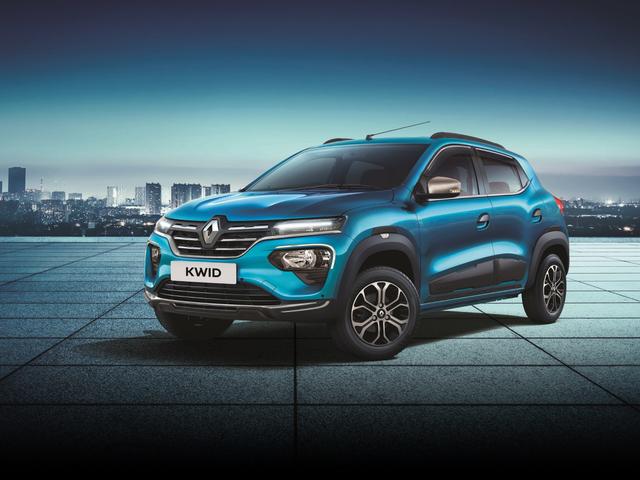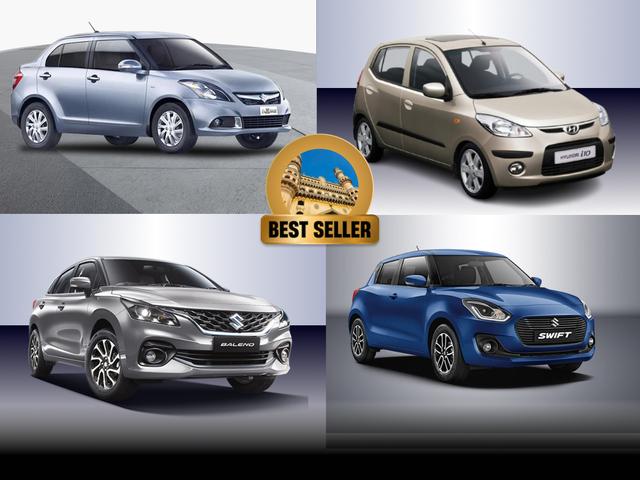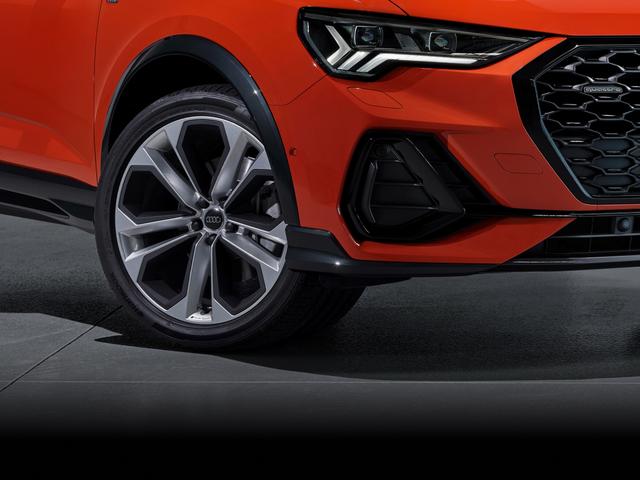


Blink blink !
Its almost here


Understanding Every Car Segment in India: Hatchbacks, Sedans, SUVs, and More
- 1There are four broad segments of cars in India according to vehicle length
- 2Certain car segments are liable to lower tax slabs
- 3Understanding car segments is key to picking the right vehicle
In today’s car market where the lines are often blurred between car segments, car models, brands and the features on offer, going back to the basics can help ease your buying decision. In this case, that would be understanding every car segment and sub-segments in India. There are broadly four car segments — A, B, C and D — based on the length of the vehicle, with two sub-segments each in the latter three segments.
These segments span body styles from hatchbacks to sedans, SUVs, crossovers and MPVs, which we’ll list as sub-classes. Understanding car segments is an important part of your buying decision as it will help you decide what size of vehicle, what engine capacity and what features on offer will best suit your needs.
Join the CARS24 official car community, AUTOVERSE for more insights, discussions and more.
What Are Car Segments?
Car segments are a broad classification of vehicles, according to size of the vehicle, in this case, the overall length. The reason car segments exist is to provide car buyers with a clear picture of the car market and how different brands and models stack up. Taxation rates are also dependent on the size of the vehicle and the capacity of the engine, which means it is often dependent on a car’s segment as well. Luxury brands are excluded from this list in the interest of simplicity, even though many popular sedan/SUV/coupe models do fall under this broad classification according to size.
| Segment | Length | Body Style | Examples |
| A-segment | Under 3,699mm | Hatchback | Maruti Suzuki Alto K10, Maruti Suzuki Celerio |
| Micro SUV | Renault Kwid, Maruti Suzuki S-Presso | ||
| B1-segment | 3,700 - 3,849mm | Hatchback | Tata Tiago, Maruti Suzuki Swift, Hyundai Grand i10 Nios |
| Mini SUV | Tata Punch, Maruti Suzuki Ignis, Hyundai Exter | ||
| B2-segment | 3,850 - 3,999mm | Hatchback | Maruti Suzuki Baleno, Hyundai i20, Tata Altroz |
| Compact Sedan | Maruti Suzuki Dzire, Hyundai Aura, Honda Amaze, Tata Tigor | ||
| MPV | Renault Triber | ||
| Sub-Compact SUV | Maruti Suzuki Brezza, Maruti Suzuki Fronx, Hyundai Venue, Kia Sonet, Nissan Magnite, Renault Kiger, Tata Nexon, Skoda Kylaq, Citroen C3, Mahindra XUV300 | ||
| C1-segment | 4,000 - 4,399mm | Compact SUV | Hyundai Creta, Kia Seltos, VW Taigun, Skoda Kushaq, Maruti Suzuki Grand Vitara, Toyota Hyryder, Citroen Aircross |
| MPV | Maruti Suzuki Ertiga | ||
| C2-segment | 4,400 - 4,599mm | Mid-size SUV | Mahindra Scorpio Classic, Hyundai Alcazar |
| MPV | Maruti Suzuki XL6, Kia Carens | ||
| Sedan | Maruti Suzuki Ciaz, Honda City, VW Virtus, Skoda Slavia, Hyundai Verna | ||
| D1-segment | 4,600 - 4,799mm | Large SUV | Tata Harrier, Mahindra XUV700, MG Hector, Skoda Kodiaq, Hyundai Tucson |
| MPV | Toyota Innova Hycross | ||
| Sedan | Skoda Octavia | ||
| D2-segment | Over 4,800mm | Full-size SUV | Toyota Fortuner, MG Gloster |
| MPV | Kia Carnival | ||
| Sedan | Skoda Superb |
With the knowledge of car segments in India, which vehicles belong to which segment and how segments differ, a car buyer is better equipped to make a more suitable decision. This stands true whether buying a new car or a used vehicle.
While some people refer to price for the classification of vehicles, this doesn’t always provide an accurate picture. For example, some vehicles belong to a particular segment but could be priced in a “segment” below or above.
Understanding this can completely change the value proposition of the vehicle, making it easier to focus on other aspects of the car buying decision. In the case of a used vehicle, it becomes possible to shop from a segment or even several segments above the segment of new cars available in your budget — something worth considering if you can’t find a new car to match your requirements in a given budget. In which case, CARS24 has you covered with a wide range of certified used vehicles.
Popular Car Segments in India

A quick look at the list of best-selling cars in India will confirm the popularity of B-segment hatchbacks and crossovers apart from the growth in popularity of C-segment SUVs in the country. Less than a decade ago, the bestseller list would have had more A-segment hatchbacks and C-segment sedans, showing an upward trend in spending capacities. From the buyer’s perspective, it means there’s more choice than ever before in the B- and C-segments, with buyers not being forced to settle for the most economical option. Here’s a quick rundown of some of the popular options in various car segments and further sub-classes that deserve a special mention.
Hatchbacks

The hatchback has grown from a humble city car to a prime example of a car that can do it all. At the heart of it, the hatchback qualities that make the segment so popular endear — the hatchback’s compact dimensions, affordability and fuel efficiency. All reasons that appeal to everyone from the first-time car buyer to someone looking for a family car that ticks all the boxes on a budget. Options range from small and economical for the budget-conscious, to spacious and premium hatchbacks in India.
Examples: Maruti Suzuki Alto K10, Hyundai i20
Sedans

Sedan segment cars in India have always held a special appeal for the car buyer, being associated with higher aspirations and premiumness. The sedan was seen as the next logical step up from a hatchback, with the bonus of a more comfortable ride, more spacious cabin and larger boot space at the same time. The compact sedan segment was born from this very insight and the Maruti Suzuki Dzire from this segment, for example, regularly features high on the bestseller list.
Examples: Maruti Suzuki Dzire, Honda City
SUVs (Sports Utility Vehicles)

The SUV segment has grown in leaps and bounds in India, as it has all over the globe. Car buyers seem to be drawn to the rugged designs that SUVs are available in. High-seating positions for more driver confidence and high ground clearance to tackle bad roads and speed breakers are also welcome attributes. By design, SUVs are more suited to off-road adventures, even when not equipped with all-wheel drive, four-wheel drive systems or even a ladder-on-frame construction. Options range from the Renault Kwid, an SUV-styled hatchback, to the Toyota Fortuner full-size SUV.
Examples: Hyundai Creta, VW Taigun
MPVs (Multi-Purpose Vehicles)
-a-type-of-car-segments-in-india.jpg)
The MPV or people carrier has always been a popular choice for the Indian family. Designed to maximise passenger carrying capacity, the sales figures of the MPV segment across price brackets show that Indian buyers still hold large seating capacities in high regard. After all, Indian families do love to travel together. Options range from the Renault Triber to the Kia Carnival, but it is a segment that is dominated by the Toyota Innova
Examples: Maruti Suzuki Ertiga, Toyota Innova Hycross
Crossovers

Technically, most SUVs sold nowadays fall into the crossover category by virtue of definition — a vehicle that blends the practical characteristics of an SUV with the ease of use of a car on a monocoque construction. However, the crossover term now loosely defines a vehicle that blurs the lines between hatchback and SUV. Options range from the Renault Kiger to the Kia EV6, an electric crossover.
Examples: Renault Kiger, Maruti Suzuki Fronx
Coupes and Convertibles

The ultimate expression of sportiness is in losing two doors and gaining a sloping roofline — the coupe body style results in designs that look sleek and stylish and immediately stand out on the road. Throw in a convertible roof and it’s about as special as you can get. Coupe and convertible cars tend to be found in the luxury segment due to the hit to practicality that makes them unpopular with the masses.
Examples: BMW Z4, Mercedes-Benz C-Class Coupe
Luxury Cars

With the trickle-down of high-end features like adaptive cruise control and 360-degree cameras to lower-segment cars, buyers still flock to luxury car segment offerings for the brand (and brag) value only found at that end of the segment. Luxury cars are usually also built to higher standards, with more emphasis on comfort in most cases which also helps to justify the higher price tags.
Examples: Mercedes-Benz C-Class, BMW 7 Series
Electric Vehicles (EVs)

Electric cars are constantly gaining ground on internal combustion vehicles thanks to their silent operation, near-instant acceleration, lower running costs and zero tailpipe emissions. Automatic transmissions and no vibrations make electric cars easier to live with in the city, though range anxiety is still something buyers are learning to live with due to limited charging infrastructure. With more options available than even a year ago (and more incoming) the EV segment is sure to grow further.
Examples: Tata Nexon EV, MG ZS EV.
Key Differences Between Car Segments
Car segments are differentiated on the basis of the length of the vehicle. But for most people, the actual differences between car segments come down to other variables that are constantly shifting. These variables blur lines between segments but when a manufacturer is able to get them right, a true segment leader is born.
Price range
A vehicle’s price can be quite a powerful differentiator — when used right. A B2-segment car priced to compete with B1-segment cars can be quite the hit the moment it’s seen to be a value option. Car segments based on price are a little harder to quantify, even if it is more consumer-friendly. This is because a car’s launch price may increase significantly over the course of its life in the market, even moving out of the “value” zone. It has been said before but the Indian car market is price-sensitive. The psychological effect of a car priced under ₹5 lakh, for example, means it will appeal to only one type of buyer — the first-car buyer, or the value-conscious buyer.
Target audience
Seen from a different perspective, target audiences can also be considered as differentiation between car segments. After all, there is a clear difference in an economical hatchback aimed at the first-time car buyer and an MPV marketed as a family car. In some cases, the buyer may be one and the same — both a first-time car buyer and someone looking for a family car — as in the case of the Renault Triber which has proved to be popular.
Features and Capabilities
Once an important differentiation between car segments, modern technology and regulation have brought the gap between features on A-segment cars versus what’s offered on upper-segment cars down to nearly nothing. Nowadays, even budget cars are offered with electric windows/mirrors, touchscreen infotainment, multiple airbags, electronic safety aids and more. In terms of capabilities, an off-road SUV will still compete against other off-road SUVs even in different price bands. Realistically though, a buyer looking at the Maruti Suzuki Jimny isn’t likely to cross shop with a Jeep Wrangler.
Factors to Consider When Choosing a Car Segment
Now that you know the proper differentiation between car segments, the next step is to understand all the factors that go into choosing a car segment to shop from.
Budget and affordability
Price is almost always the ultimate deciding factor in any new or used car purchase — no one has an unlimited budget, even with financing options. Price bands are an easy way to differentiate car segments and it turns out to be consumer-friendly too. Cars under ₹5 lakh, cars under ₹10 lakh, cars under ₹20 lakh and so on are a wider net than size as a deciding factor. When approaching a car purchase with a budget, be sure to look at all options across body styles. You never know when a body style you never considered could turn out to have all the attributes you were looking for.
Daily usage and driving conditions
Every buyer’s usage case scenario for their vehicle will be different. It might even be different within the same family, with multiple users depending on one car for mobility. It’s always helpful to put aside emotional ties to any particular car, brand or segment at this point and truly evaluate what you require the vehicle for — daily commuting in traffic, occasional family outings, or recreation purposes. Examine what your daily usage will be, where the car will be driven for a majority of the time and make a decision based on that. Trying to find a car to fit every single situation may result in compromises at its most important purpose. That purpose is up to you as a buyer to figure out.
Family size and seating needs
This one’s simpler to conclude — if you have a large family, you’ll need a large car. If you seldom travel with more than four passengers in the car, then a 5-seater is all you need. Some vehicles are marketed as 5+2 seaters, where the third row of seating is compromised for people carrying, unless for small children. A 7- or 8-seater SUV or MPV will offer the most flexibility in seating capacity.
Fuel efficiency and maintenance costs
One aspect of deciding on a car segment that’s sometimes overlooked is fuel efficiency and maintenance costs. As a very real part of car ownership, fuel and service bills can make or break an ownership experience. Considering your daily usage scenario and budget, work backward towards picking a car from the right segment, with the right engine and gearbox to make life easier for you in the long run.
Emerging Trends in the Indian Car Market
What jumps out from examining the car segments in the Indian car market, it’s that SUVs are here to stay. Just the sheer choice of SUV body styles across A, B, C and D segments proves it beyond a doubt. Whether your budget is for a car under ₹5 lakh, or for a car under ₹50 lakh, there will likely be an SUV that’s at the top of your consideration. For good reasons, too.
The SUV body style largely addresses most of the issues of the poor road infrastructure in the country with high ground clearance and the ability to clear obstacles a hatchback or sedan may not. The value and prestige associated with the SUV body style don’t hurt, either. The SUV segment grew to 50.4 percent of all passenger vehicles sold in India, a 10 percent jump from just two years ago.
On the other hand, with rising fuel prices and deteriorating air quality in many parts of the country, many buyers are turning to electric vehicles. The promise of zero tailpipe emissions, lower running costs, and ease-of-use seem to outweigh the lack of charging infrastructure for public charging for buyers. As per data, the first seven months of FY2024 saw a 10.4 percent increase in EV 4W sales versus last year. This has been helped by various subsidies, of course.
Another option for buyers is strong hybrid technology. Seen as the perfect blend of internal combustion technology and EV mobility, these strong hybrid vehicles have a small battery and electric motor to assist the internal combustion engine. In effect, the hybrid drivetrain improves fuel efficiency and performance to some extent. The net result is lower fuel bills. The uptake of strong hybrids in India saw a 27.1 percent increase versus last year.
Segment-busting EVs like the MG Comet EV also proved to be popular, thanks to its compact size and premium interiors. That is despite its dimensions putting it in the A-segment and a price tag more in line with the B-segment. Hopefully, more buyers can come to appreciate the usefulness of a compact city car, which is easy to navigate in city traffic. On a wide enough scale of adoption, these ultra-compact city cars can even help ease traffic congestion in cities.
Conclusion
It may appear that there is no one-size-fits-all rule when it comes to car segments. The reality is that the types of car segments and choosing a car segment becomes a decision that’s more a sum of its parts. The truth is that understanding car segments and selecting the right one is a decision shaped by multiple factors coming together. Ultimately all factors are to be considered to find the right car that fits your needs but hopefully, this article has clarified the factors themselves.
FAQs
Q. How many categories are there in a car?
Broadly speaking, there are four segments of cars in India, with two sub-segments each in three of the segments. These segments can further be sub-classified according to body style such as hatchback, SUV, sedan, MPV, etc
Q. What is the B-segment and C-segment car?
A B-segment car falls into the size restrictions of the segment, namely between 3,700-3,999mm in length. A C-segment car has to adhere to the 4,000-4,599mm length restriction. There are some exceptions with cars measuring in a few mm either over or under.


Blink blink !
Its almost here













.jpg&w=640&q=75)









Blink blink !
Its almost here



-Explained-_-Decoding-Bharat-Stage-7_-What-It-Means-for-India-and-You.jpg&w=828&q=75)







